This user has no status.
Firstly I just wanna say sorry for the watermark, it seems that there are some people who like to steal my repair pics and claim them as their own.
A friend of mine asked me to fix his old Primorac Carbon that was in storage for some time. The blade was in pretty bad shape with some severe damage in the top ply and edges, besides the normal dirty. It was also very heavy at 104g, I must have absorbed some moisture during this time.
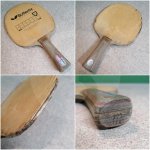
The first thing I did was to remove the handles, it was no surprise that they came out fairly easily. I would need to sand the top plies in order to fix them, this meant that the original lettering would disappear. I discussed it with the owner and he didn't mind so I went ahead.
The edges were so banged up that the only way to save them was to re-rout the shape of the blade. This meant that the blade was going to loose about 1mm all around, which was also ok with the owner. After this I removed the most damaged parts of the top ply and replaced them with new ones. I used Hinoki for this, although it's impossible to match 20 year old wood, but because these areas were near the edges they won't affect playing. The smaller gaps were filled with wood putty. At this time I also decided to do some minor weight relief in order to make the blade more manageable.
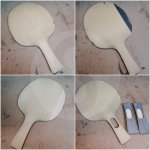
To finalize the repair I cleaned and re-attached the handles, gave the blade a light sealing to prevent further splintering, and voilá! This one is ready for some more battles, and with 93g it will be a lot easier on the wrist.
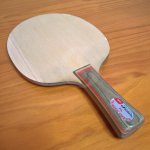
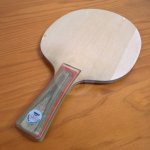
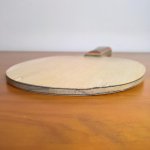
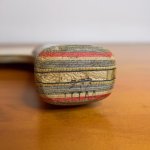
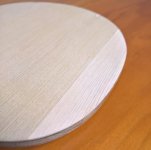
A friend of mine asked me to fix his old Primorac Carbon that was in storage for some time. The blade was in pretty bad shape with some severe damage in the top ply and edges, besides the normal dirty. It was also very heavy at 104g, I must have absorbed some moisture during this time.

The first thing I did was to remove the handles, it was no surprise that they came out fairly easily. I would need to sand the top plies in order to fix them, this meant that the original lettering would disappear. I discussed it with the owner and he didn't mind so I went ahead.
The edges were so banged up that the only way to save them was to re-rout the shape of the blade. This meant that the blade was going to loose about 1mm all around, which was also ok with the owner. After this I removed the most damaged parts of the top ply and replaced them with new ones. I used Hinoki for this, although it's impossible to match 20 year old wood, but because these areas were near the edges they won't affect playing. The smaller gaps were filled with wood putty. At this time I also decided to do some minor weight relief in order to make the blade more manageable.

To finalize the repair I cleaned and re-attached the handles, gave the blade a light sealing to prevent further splintering, and voilá! This one is ready for some more battles, and with 93g it will be a lot easier on the wrist.














